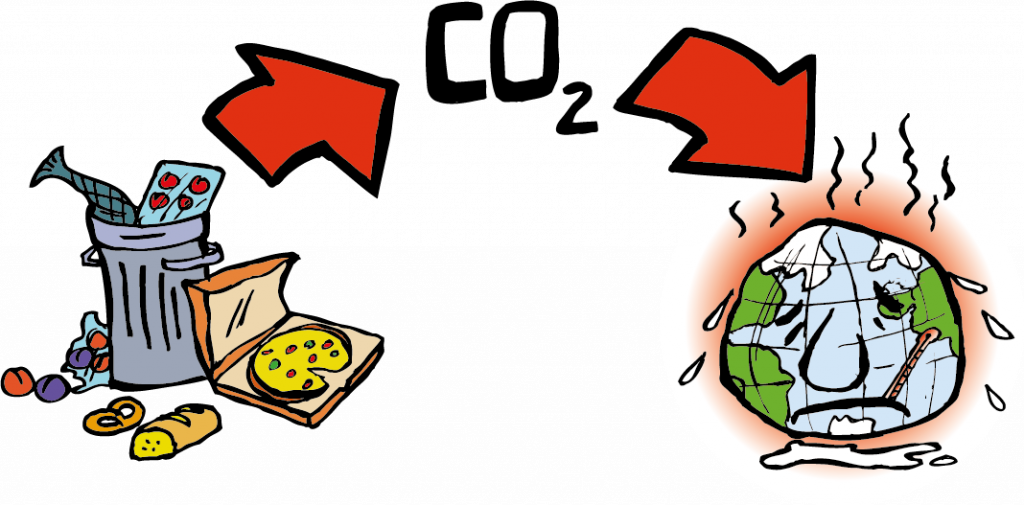Food Waste Facts
At Plast Team, we do what we can to contribute to a more sustainable world. One of the things we do is that we take part in the movement to prevent food waste.
Stop Wasting food (Stop Spild Af Mad) is Denmark’s largest movement against food waste, and we will like to spread as much information as possible about food waste and how we can all prevent this from happening. Therefore, we have gathered some facts about food waste, which we believe provides some food for thought.
- In the Western World, the biggest food wasters are the consumers: Per capita waste by consumers is between 95-115 kg a year in Europe and North America, while consumers in sub-Saharan Africa, south and south-eastern Asia, each throw away only 6-11 kg a year. Per capita food losses and waste, at consumption and pre-consumptions stages, in different regions.

- We are over 7 billion people on this planet, of which 925 million are starving. Yet we annually lose and waste 1,3 billion tons of food – or enough to feed 3 billion people.
- Roughly one third of the food produced in the world for human consumption every year – approximately 1,3 billion tons – gets lost or wasted.
-
Food losses during harvest and in storage translate into lost income for small farmers and into higher prices for poor consumers.
-
The amount of food lost or wasted every year is equivalent to more than half of the world’s annual cereals crop (2,3 billion tons in 2009/2010).
-
Total per capita food production for human consumption is about 900 kg a year in rich countries, almost twice the 460 kg a year produced in the poorest regions.
-
In developing countries 40% of losses occur at post-harvest and processing levels while in industrialized countries more than 40% of losses happen at retail and consumer levels.
-
At retail level, large quantities of food are wasted due to quality standards that over-emphasize appearance.
-
Food loss and waste also amount to a major squandering of resources, including water, land, energy, labor and capital and needlessly produce greenhouse gas emissions, contributing to global warming and climate change.
-
In developing countries food waste and losses occur mainly at early stages of the food value chain and can be traced back to financial, managerial, and technical constraints in harvesting techniques as well as storage and cooling facilities. Strengthening the supply chain through the direct support of farmers and investments in infrastructure, transportation, as well as in an expansion of the food and packaging industry could help to reduce the amount of food loss and waste.
-
In medium- and high-income countries food is wasted and lost mainly at later stages in the supply chain. Differing from the situation in developing countries, the behavior of consumers plays a huge part in industrialized countries. The study identified a lack of coordination between actors in the supply chain as a contributing factor. Farmer-buyer agreements can be helpful to increase the level of coordination. Additionally, raising awareness among industries, retailers and consumers as well as finding beneficial use for food that is presently thrown away are useful measures to decrease the amount of losses and waste.
-
In September 2015, the United Nations adopted the UN Sustainable Development Goals (SDG), among them the UN Sustainable Development Goal 12.3: By 2030, halve per capita global food waste at the retail and consumer levels and reduce food losses along production and supply chains, including post-harvest losses.
-
The EU and Member States are committed to meeting the UN Sustainable Development Goals (SDG), adopted in September 2015, including a target to halve per capita food waste at the retail and consumer level by 2030, and reduce food losses along the food production and supply chains.
-
In September 2015, in alignment with UN Sustainable Development Goal 12.3, the United States Department of Agriculture (USDA) and EPA announced the first ever domestic goal to reduce USA’s food loss and waste by half by the year 2030.
sources: Food and Agriculture Organization of the United Nations (FAO), European Commission, EU FUSIONS, United States Department of Agriculture, United States Environmental Protection Agency, World Resources Institute, The Danish Environmental Protection Agency (EPA)





